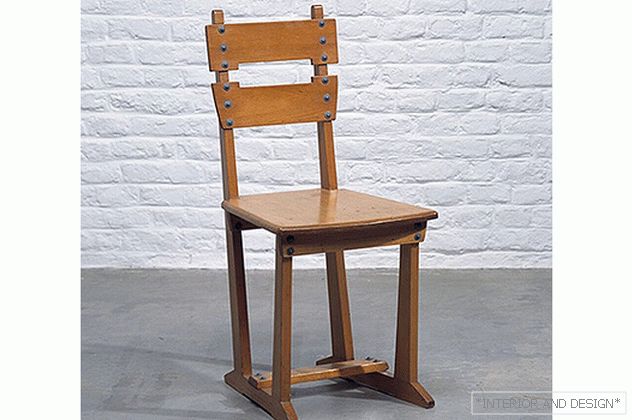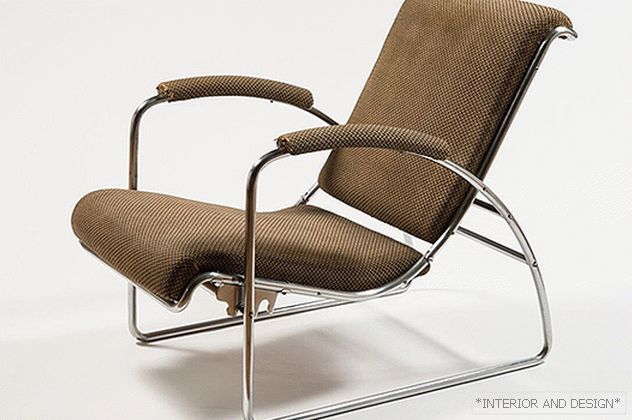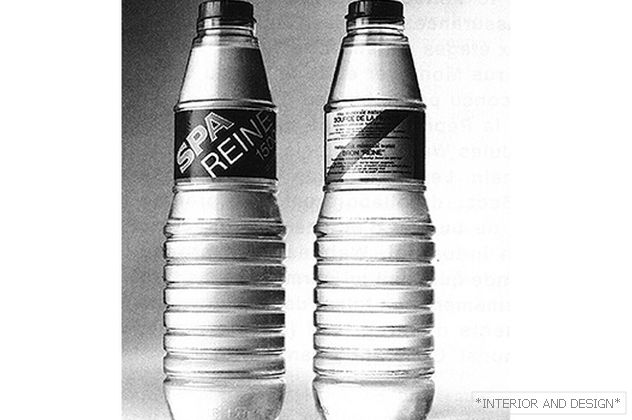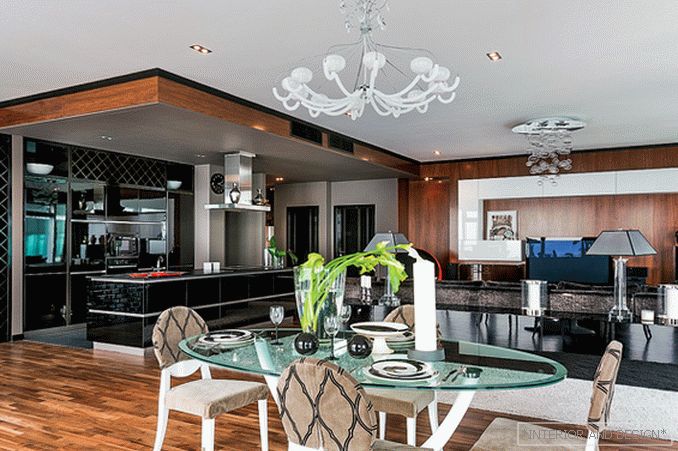Opened three years ago, the ADAM Brussels Museum is gaining popularity. The hit of the year is the exhibition Panorama: The History of Modern Design in Belgium.
По теме: ADAM (Art & Design Atomium Museum): музей дизайна в Брюсселе
In fact, this is the first large-scale display of the twentieth-century design of the country with a difficult, sometimes dramatic, history, which, however, was able to make a great contribution to the common European project culture. The exhibition begins with the period of Art Nouveau and the masters who worked at the turn of the century. Among the most famous are Victor Horta (1861–1947), Gustave Serurie-Bovi (1858–1910), Paul Ancar (1859–1901), Philip Wolfers (1858–1929) and Henri van de Velde (1863–1957). The social quest for the period between the two wars is shown in detail: the avant-garde and pedagogical experiments in the Cambrai school.
 G. Suryure-Bovi. Chair Silex, 1906.
G. Suryure-Bovi. Chair Silex, 1906.  M. Bonnie (1896-1959). Shelland, 1928.
M. Bonnie (1896-1959). Shelland, 1928. Between 1920–1930, more commercially oriented Art Deco masters and designers developing functional solutions coexisted in Belgium at the same time. A special section is devoted to post-war Belgian modernism. In the 1930s, the ideas and ideas of functionalism in the spirit of Weimar Bauhaus were distributed by architect and designer Henri van de Velde. Back in 1926, he headed the new Higher Institute of Decorative and Applied Art Combre, the later famous School Combre. A little later, Henri van de Velde was appointed adviser to the Belgian railway company, in 1933 he became an advisor to the Ministry of Public Works. Important fact: Henri van de Velde oversaw Belgium’s participation in international exhibitions - in Paris in 1937 and in New York in 1939.
 Tea and coffee service, Delhaize Freres, 1930.
Tea and coffee service, Delhaize Freres, 1930. In the 1950s, the Belgians interpreted the design as a panacea for all social ills. The post-war period is interesting and historically: it was during the Cold War period that small Belgium began to play an important political role, as a result, Brussels became the capital of the European Union. All these collisions occur against the background of the development of environmental, interior and consumer design, against the background of the emergence of new items, electrical appliances, furniture, graphics and transport.
 J.-P. Amon-Alt (1928–2014), L. Van Malderen. Plastic water bottles, Spa Monopole.
J.-P. Amon-Alt (1928–2014), L. Van Malderen. Plastic water bottles, Spa Monopole. Since 1954, Minister of Economy Jean Rey (1902–1983) pursued a policy of supporting national design at the government level. He organized and held the first exhibition of domestic serial products in Liege, as well as the powerful performance of the Belgian designers at the 10th Triennial in Milan. In 1956, Jean Rey established the Institute of Industrial Design and the prestigious Golden Badge. The development of ideas and author's concepts up to the oil crisis of the early 1970s is a strong section of the exhibition. Among the most famous designer brands in Belgium are Tupperware (dishes and kitchen utensils), Samsonite (suitcases, backpacks, travel bags and accessories), de Coene is a furniture factory that has received a license from Knoll for the sale of international craftsmen in the Benelux countries. And, of course, Moerop, which supplies large plastic furniture to the market.
 C. Gevers (1928–2007). Chair TBA, 1958.
C. Gevers (1928–2007). Chair TBA, 1958. The exhibition details the activities of the Brussels Design Center (1964–1985), the organization, which supported the designers and promoted new things and new ideas. Through pieces of furniture, graphics, paintings and fragments of documentary and feature films, curators show various facets of Belgian design. The whole twentieth century in Belgium consistently pursued the idea of improving everyday life. The curators of Panorama recognize that Belgium is not the most designer country, but without understanding the key points in the development of local design, it is impossible to fully see the European design of the twentieth century.
The exhibition "Panorama: the history of modern design in Belgium" is open until January 7, 2018.



